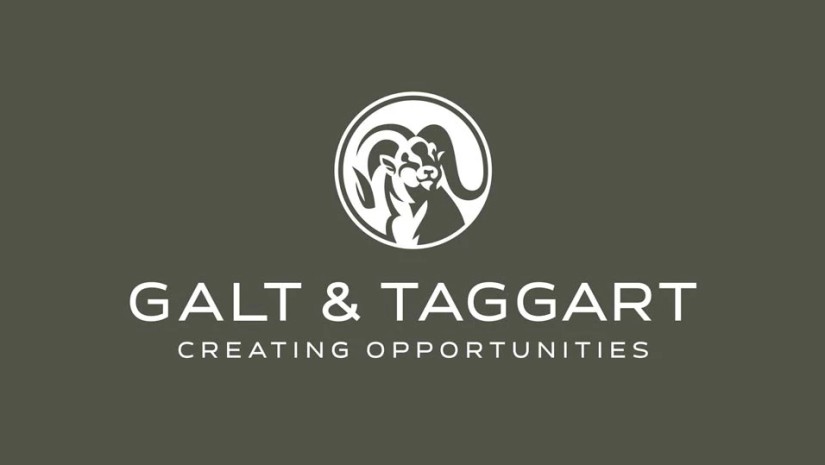Galt&Taggart published Global Markets Weekly Update.
USA
Stock Market Overview:
The S&P 500 (SP500) kicked off the second half of 2024 with its best weekly performance since late April on Friday. The advance was driven by labor market data that has supported the case for Federal Reserve interest rate cuts; The U.S. economy again added slightly more jobs than expected in June though the unemployment rate increased, the Labor Department reported Friday. Nonfarm payrolls increased by 206,000 for the month, better than the 200,000 Dow Jones forecast though less than the downwardly revised gain of 218,000 in May, which was cut sharply from the initial estimate of 272,000. The unemployment rate unexpectedly climbed to 4.1%, tied for the highest level since October 2021 and providing a conflicting sign for Federal Reserve officials weighing their next move on monetary policy. The forecast had been for the jobless rate to hold steady at 4%. Remarkably, the S&P (SP500) is now within striking distance of the 5,600 level and is close to topping the year-end target of several brokerages that have scrambled to keep up with the inexorable bull run. For the week, the S&P (SP500) added +2%, while the tech-heavy Nasdaq Composite (COMP:IND) gained +3.5%. The blue-chip Dow (DJI) climbed +0.7%.
Corporate news:
Tesla:
Tesla’s stock price surged on Friday, erasing its yearly losses and achieving a remarkable 27% gain for the week, closing at $251.55. This resurgence follows a better-than-expected second-quarter deliveries report, which, despite a 4.8% year-over-year drop, was less severe than the first-quarter decline, instilling investor confidence. The stock had hit a 52-week low of $138.80 in April amid disappointing sales, layoffs, and abandoned plans for a low-cost family car production in Texas. Tesla's upcoming second-quarter financial results on July 23 are expected to draw attention, particularly regarding automotive gross margins. Tesla's recovery is underscored by ongoing efforts to boost sales through discounts and incentives for its EV lineup, including the Model 3, Model Y, Model S, and Model X, along with the recently introduced Cybertruck. The Cybertruck emerged as the top-selling fully electric pickup in the U.S. in Q2. Despite this, Cantor Fitzgerald predicts fewer car deliveries this year compared to last, setting a price target of $230 and a "buy" recommendation for Tesla stock. Meanwhile, broader market indices like the Nasdaq and S&P 500 have significantly outpaced Tesla's modest 1.2% year-to-date increase. Tesla shares have surged more than 80% since April’s low.
Paramount:
David Ellison’s Skydance has reached a preliminary agreement with Shari Redstone’s National Amusements to merge with Paramount, after a previous deal fell through weeks earlier. The proposal, now under review by Paramount’s special committee, has already led to a 9% surge in Paramount shares. The deal terms involve Skydance acquiring half of Paramount’s controlling shares at $15 per share for $4.5 billion and contributing $1.5 billion to Paramount’s balance sheet, with Redstone receiving a reduced consideration of $1.75 billion. The initial bid was halted by Redstone in June over concerns of reduced payment, and the lengthy negotiation process has resulted in the departure of CEO Bob Bakish, leaving a three-headed office of the CEO in charge. Other bids came from private equity firm Apollo and Sony, and media mogul Barry Diller. PARA stock is up 15% during the week.
USA
Semiconductors: (On Semiconductor; Advanced Micro Devices; Broadcom)
Semiconductor stocks continue to rise, but notably, several S&P 500 semiconductor stocks outperformed NVIDIA (NVDA) last week. ON Semiconductor (ON) surged by 8%, Advanced Micro Devices (AMD) climbed 8%, and Broadcom (AVGO) increased by 7%, while NVIDIA saw a modest 1% gain. ON Semiconductor (ON) specializes in power and analog semiconductors, essential for energy-efficient applications and automotive solutions. Advanced Micro Devices (AMD) focuses on microprocessors and graphics processors, which are critical for computing and gaming performance. Broadcom (AVGO) excels in broadband and connectivity semiconductors, vital for network infrastructure and data centers. These companies play a crucial role in building out AI infrastructure, supplying the necessary hardware to handle massive computational loads and data processing required for AI applications. The demand for advanced semiconductor technology
is expected to grow as AI continues to evolve, suggesting further potential for these companies. The performance of these stocks reflects their strategic importance in the tech industry and their capacity to support the expanding needs of AI and machine learning, positioning them as key players in the future of technology.
The Week Ahead:
U.S. inflation data and the first handful of second-quarter results will be the highlights for investors next week. Wall Street and Washington alike will hear from Federal Reserve Chairman Jerome Powell, as he sits for two days of testimony before lawmakers.
Delta Air Lines and PepsiCo release earnings on Thursday, followed by several big banks on Friday: Bank of New York Mellon, Citigroup, JPMorgan Chase, and Wells Fargo.
The economic-data highlight of the week will be the Bureau of Labor Statistics' consumer price index for June on Thursday. The consensus estimate calls for a 0.1% increase during the month, after the index was unchanged in May. The core CPI, which excludes food and energy components, is expected to be up 0.2%. The BLS will publish the June producer price index on Friday.
The Fed's Powell will deliver his Semiannual Monetary Policy Report to Congress next week.
Europe
Labour wins UK election; French far right leads ahead of second round
In local currency terms, the pan-European STOXX Europe 600 Index ended 1.01% higher. Political jitters eased as the far right in France failed to win an outright majority in the first round of legislative elections on June 30. Meanwhile, the Labour Party won the UK general election on July 4 with a large majority. Major stock indexes also rose, with France’s CAC 40 Index climbing 2.62%, Germany’s DAX gaining 1.32%, and Italy’s FTSE MIB putting on 2.51%. The UK’s FTSE 100 Index added 0.49%.
In the UK, Sir Keir Starmer’s Labour Party won a resounding victory in the UK’s general election, ending 14-years of turbulent Conservative rule. Rachel Reeves will be the country’s first female Chancellor of the Exchequer (finance minister).
The week was marked by heightened political uncertainty after Marine Le Pen’s far-right National Rally won the largest share of the vote in the first round of the French parliamentary election, inflicting heavy losses on President Emmanuel Macron’s Ensemble, which came in third, behind the left-wing New Popular Front.
ECB’s Lagarde slightly hawkish; minutes show division over June cut
Speaking at the European Central Bank’s (ECB’s) annual retreat in Portugal, ECB President Christine Lagarde appeared to strike a slightly more hawkish tone. She said that Europe is “still facing several uncertainties regarding future inflation, especially in terms of how the nexus of profits, wages and productivity will evolve and whether the economy will be hit by new supply-side shocks.” She added: “It will take time for us to gather sufficient data to be certain that the risks of above-target inflation have passed.” Meanwhile, minutes from the ECB’s June meeting showed some members opposed the first rate cut since 2019 because wage growth had surprised to the upside and inflation seemed to be stickier.
A final estimate of eurozone inflation confirmed that the year-over-year change in consumer prices ticked lower in June to 2.5%. However, a crucial services component remained stubbornly high, likely reinforcing the ECB’s case for caution.
German manufacturing weakens unexpectedly; French industrial output falls Germany’s manufacturing base weakened further in May. Seasonally adjusted orders fell 1.6% sequentially, while industrial production contracted 2.5%. Industrial output in France also declined, dropping 2.1%.
Japan
Annual pay increases by most in over 30 years
Japan’s stock markets gained ground, with the Nikkei 225 Index climbing 3.36% and the broader TOPIX Index advancing 2.65% in local currency terms. Both indexes hit all-time highs during the week, propelled in part by weakness in the Japanese yen, which is typically a tailwind for export-focused industries. The yen strengthened a bit later in the week.
The yield on Japan’s 10-year sovereign bonds climbed to about 1.1%—its highest level since 2011—before easing somewhat with U.S. Treasury yields later in the week.
Data from Japan’s biggest union group indicated that its members achieved an average wage increase of 5.1%, the biggest uptick in 33 years. The final figure, which included more small businesses, came in below the initial estimate of a 5.28% wage hike but still highlighted the strong upward momentum in wages.
Consumer spending contracts unexpectedly in May
Household spending declined 1.8% year over year in May, well shy of a consensus estimate that called for outlays to increase 0.1%. On a sequential basis, consumer spending fell 0.3% compared with expectations for a month-over-month uptick of 0.5%. Weakness in the yen appeared to weigh on spending, especially demand for overseas package tours. Meanwhile, rising prices drove a 3.1% decline in outlays for food relative to year-ago levels.
First-quarter GDP revised lower
In the first three months of the year, Japan’s economy shrank by 2.9% year over year, a sharper contraction than the first estimate that put the decline in gross domestic product (GDP) at 1.8%. The government attributed this revision to corrections in construction orders. The annualized change in GDP was also lowered for the fourth and third quarters of 2023.
China
Chinese equities fell as underwhelming manufacturing data reinforced concerns about the slowing economy. The Shanghai Composite Index and the blue chip CSI 300 both registered modest losses for the week. In Hong Kong, the benchmark Hang Seng Index gained 0.46% during a holiday-shortened week, according to FactSet. Markets in Hong Kong were closed Monday for the Special Administrative Region Establishment Day.
China's manufacturing sector shrank in June for the second consecutive month, government data showed. The official manufacturing purchasing managers’ index (PMI) reached 49.5 in June, unchanged from May, as new orders and exports declined. The figure missed the 50-mark threshold separating growth from contraction. The nonmanufacturing PMI, which measures construction and services activity, rose to a below-consensus 50.5, down from 51.1 in May.
Separately, the private Caixin/S&P Global survey of manufacturing activity edged up to a better-than-forecast 51.8 in June from 51.7 in May, marking its eighth monthly expansion. However, the Caixin services PMI was 51.2 in June, missing economists’ forecasts and slowing from 54 in May. The mixed PMI readings reflected the uneven performance of China’s economy this year amid a yearslong property slump that has hit domestic consumption and rising trade tensions that threaten the manufacturing sector.
In other news, the value of new home sales by the country’s top 100 developers fell 17% in June from the prior-year period, easing from a 34% decline in May, according to the China Real Estate Information Corp. The data boosted hopes that China’s housing market, now in its fourth year of a downturn, may start to gain traction after the government announced a sweeping rescue package in May.














